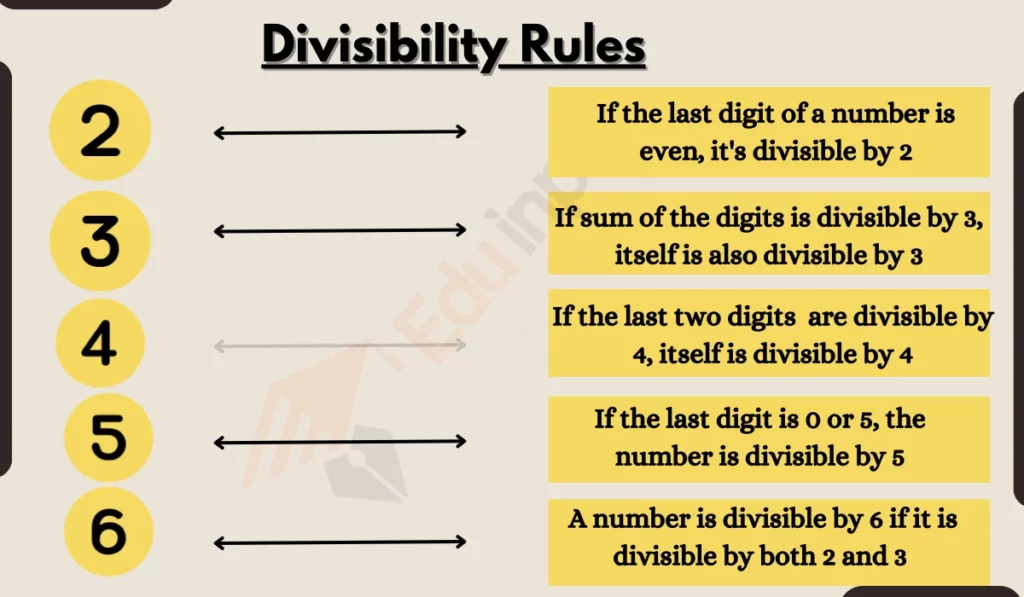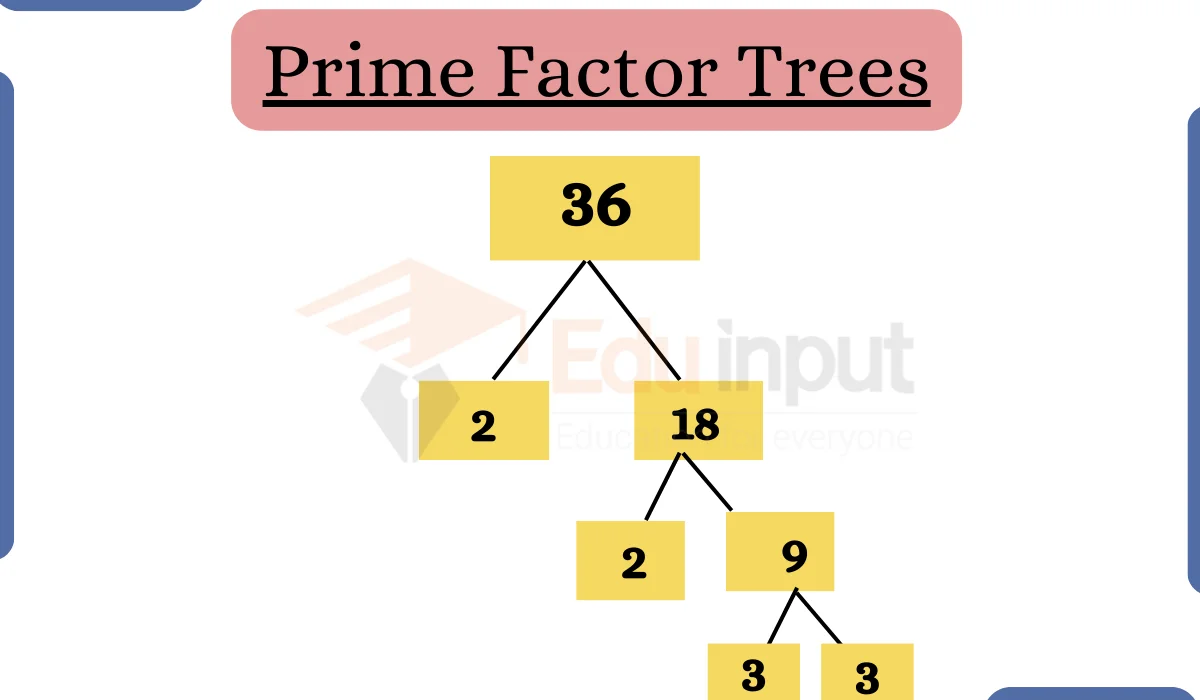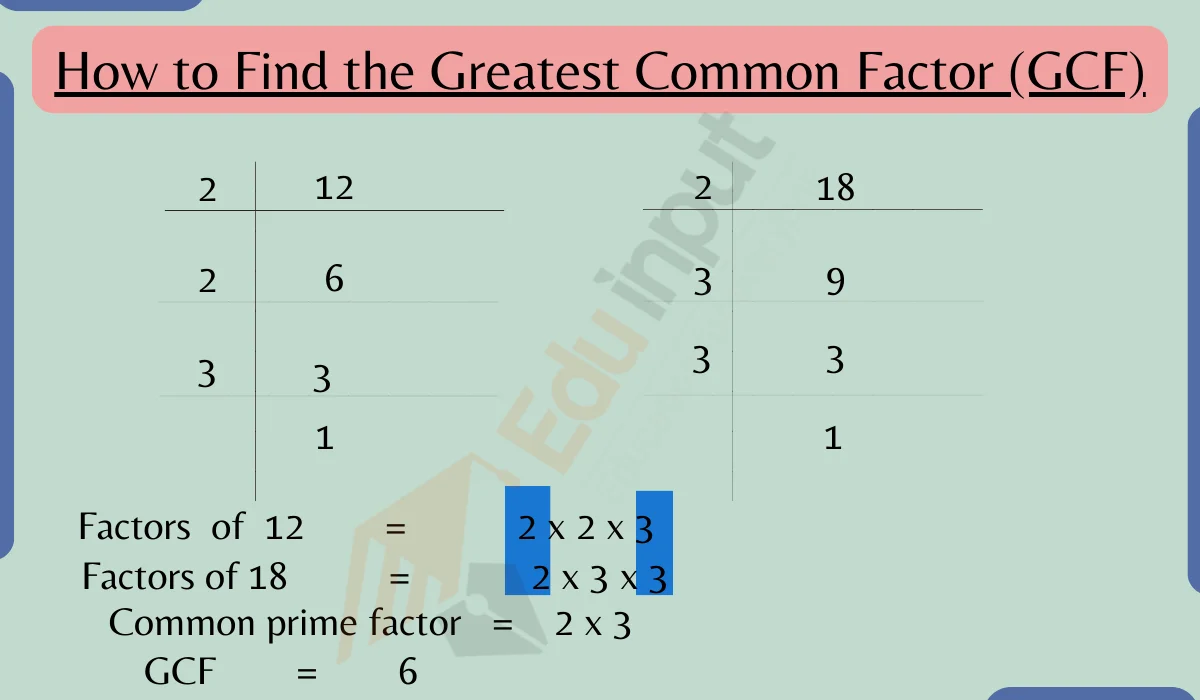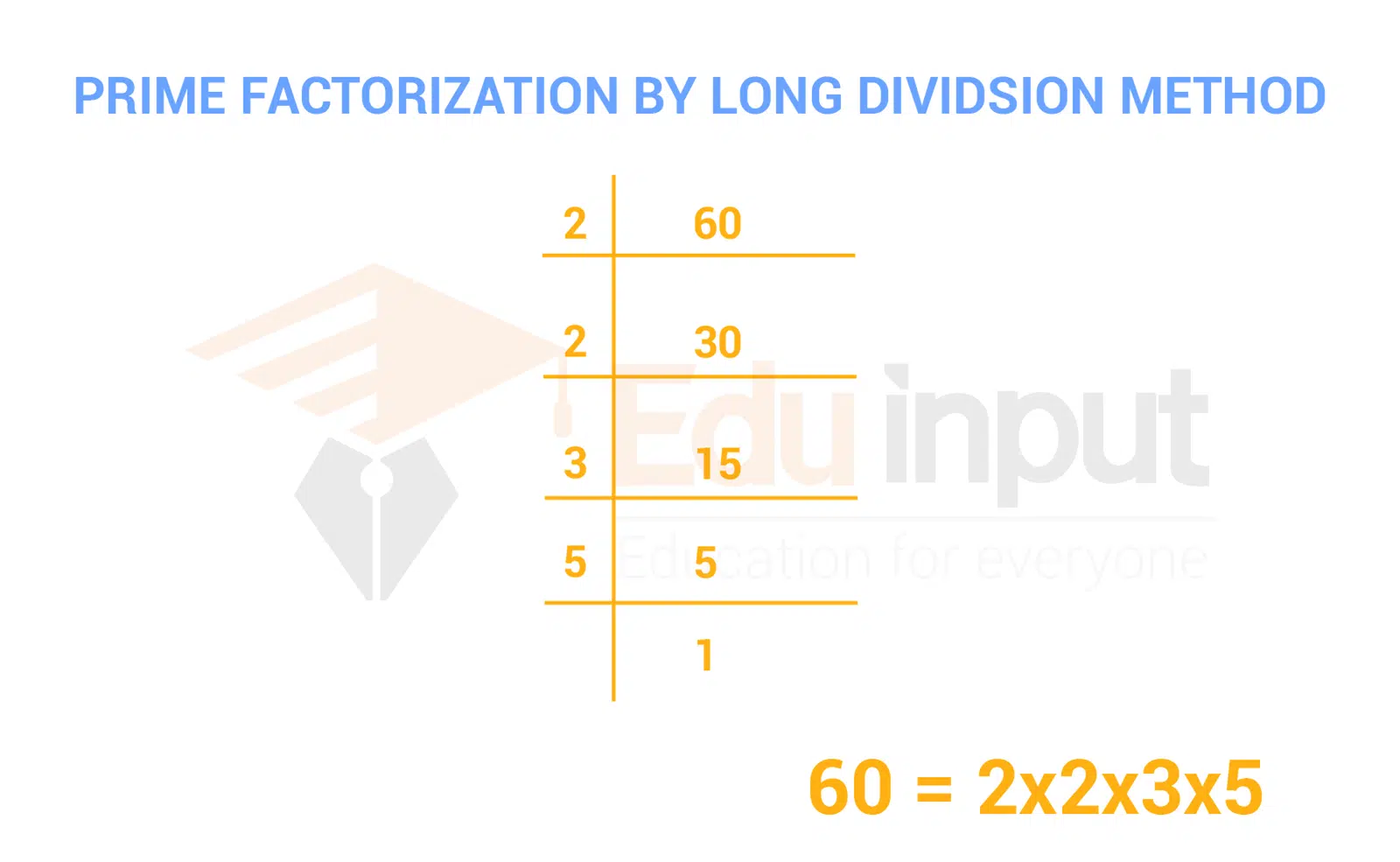Prime Factorization and Divisibility Rules
Prime factorization is the process of expressing a composite number as the product of its prime factors. A prime number is a natural number greater than 1 that has no positive divisors other than 1 and itself. Some examples of prime numbers are 2, 3, 5, 7, 11, etc.
In this article, we’ll discuss two i topics Prime Factorization and Divisibility Rules.

Prime Factorization
Prime factorization is the process of breaking down a number into its prime factors. Prime factors are the fundamental building blocks of numbers.
How to Find Prime Factors
To find the prime factors of a number, follow these steps:
- Start with the number you want to factor.
- Begin with the smallest prime number, 2.
- Divide the number by 2 as many times as possible, writing down the 2 each time.
- Move on to the next prime number, 3, and repeat the process.
- Continue this pattern until you’ve completely factored the number.
Example
Prime Factorization of 2
- Start with 24.
- Divide by 2, which goes in 12 times. Write down the 2.
- Now, divide 12 by 2, which goes in 6 times. Write down another 2.
- Continue dividing 6 by 2 until you can’t anymore. You’ll write down two more 2’s.
- The prime factors of 24 are 2, 2, 2, and 3.
Divisibility Rules
Divisibility rules are shortcuts that help you determine whether one number is divisible by another without actually performing division.
Divisibility by 2 and 5
- If the last digit of a number is even (0, 2, 4, 6, 8), it’s divisible by 2.
- If the last digit is 0 or 5, the number is divisible by 5.
Example
Is 346 divisible by 2? Yes, because 6 is even.
Is 450 divisible by 5? Yes, because it ends with 0 or 5.
Divisibility by 3
If the sum of the digits in a number is divisible by 3, the number itself is also divisible by 3.
Example
Is 237 divisible by 3? Yes, because 2 + 3 + 7 = 12, which is divisible by 3.
Divisibility by 9
If the sum of the digits is divisible by 9, then the number is divisible by 9.
Example
Is 675 divisible by 9? Yes, because 6 + 7 + 5 = 18, which is divisible by 9.
Divisibility by 4
If the last two digits of a number are divisible by 4, the number itself is divisible by 4.
Example
Is 2,684 divisible by 4? Yes, because 84 is divisible by 4.
Divisible by 6
A number is divisible by 6 if it is divisible by both 2 and 3.
FAQs
What are prime numbers?
A prime number is a natural number greater than 1 that has no positive divisors other than 1 and itself. Examples include 2, 3, 5, and 7.
Why is prime factorization important?
Prime factorization is essential because it helps us simplify complex numbers, solve mathematical problems, and understand the fundamental components of numbers.
Can you provide an example of applying both prime factorization and divisibility rules?
Let’s find the prime factorization of 60 and determine if it’s divisible by 3. After prime factorization, we have 2, 2, 3, and 5. The sum of these factors is 12, which is divisible by 3. So, 60 is divisible by 3.







Leave a Reply